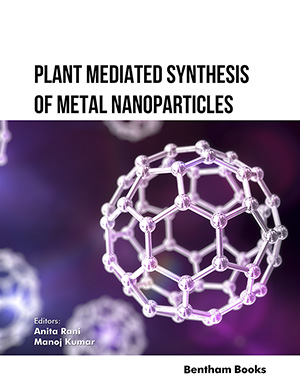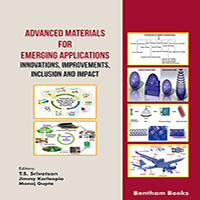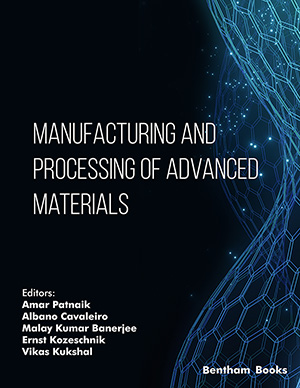Abstract
Background: Treatment of glioma with conventional approaches remains a far-reaching target to provide the desired outcome. This study aimed to develop and optimize Gemcitabine hydrochloride- loaded PLGA nanoparticles (GNPs) using the Box-Behnken design methodology. The independent variables chosen for this study included the quantity of Polymer (PLGA) (X1), Tween 80 (X2), and Sonication time (X3), whereas the dependent variables were Particle size (Y1) EE % (Y2) and PDI (Y3). The optimized biodegradable nanoparticles were investigated for their anticancer effectiveness in U87MG human glioblastoma cells in vitro.
Method: The formulation process involved two steps. Initially, emulsification was carried out by combining the organic polymer solution with the aqueous surfactant solution. Subsequently, in the second step, the organic solvent was evaporated, resulting in the precipitation of the polymer and the formation of nanoparticles. The quantity of PLGA, Tween 80, and PVA (at a constant concentration) was adjusted based on the experimental trial approach. Subsequently, the PLGA-based nanoparticles underwent characterization, wherein their particle size, encapsulation efficiency, polydispersity index (PDI), and cumulative release were assessed. The optimal formulation composition was determined as 200 mg of PLGA, 4 ml of Tween 80, and 2 mg of PVA. Further, the optimized GNPs were evaluated for their anti-cancer effectiveness on U87 MG cells by MTT and apoptosis assay.
Results: The results demonstrated that the optimized GNPs exhibited an encapsulation efficiency of 81.66 %, a particle size of 140.1 nm, and a PDI of 0.37. The morphology of the Opt-GNPs was observed to be spherical through transmission electron microscopy (TEM).
Conclusion: The Apoptosis study further confirmed the observations of MTT assay as the Opt- GNPs significantly enhanced the apoptosis in U-87 MG cells than the Standard marketed formulation.
Keywords: Box behnken design, gemcitabine hydrochloride, PLGA nanoparticles, cytotoxicity, apoptosis.
[http://dx.doi.org/10.3390/molecules27144470] [PMID: 35889343]
[http://dx.doi.org/10.4103/jpbs.JPBS_239_20] [PMID: 34349476]
[http://dx.doi.org/10.17344/acsi.2021.6977] [PMID: 34918770]
[http://dx.doi.org/10.5772/intechopen.110585]
[http://dx.doi.org/10.5958/0974-8164.2023.00003.5]
[http://dx.doi.org/10.1016/j.jmmm.2019.04.058]
[http://dx.doi.org/10.1080/02652048.2020.1842529] [PMID: 33206010]
[http://dx.doi.org/10.1016/j.heliyon.2020.e03846] [PMID: 32373744]
[http://dx.doi.org/10.1016/j.microc.2021.106491]
[http://dx.doi.org/10.4274/tjps.galenos.2020.08522] [PMID: 34496552]
[http://dx.doi.org/10.2174/2405461503666180501115359]
[http://dx.doi.org/10.1016/j.msec.2021.112183] [PMID: 34082983]
[http://dx.doi.org/10.1002/bmc.5581] [PMID: 36609805]
[http://dx.doi.org/10.1016/j.ijbiomac.2021.09.012] [PMID: 34508723]
[http://dx.doi.org/10.3390/gels8020103] [PMID: 35200484]
[http://dx.doi.org/10.1016/j.jddst.2022.103207]
[http://dx.doi.org/10.1016/j.colsurfb.2016.03.039] [PMID: 27003468]
[http://dx.doi.org/10.3390/pharmaceutics12100920] [PMID: 32992903]
[PMID: 34505271]
[http://dx.doi.org/10.1016/j.jddst.2022.103850]
[http://dx.doi.org/10.1016/j.jddst.2021.102480]
[http://dx.doi.org/10.1016/j.jconrel.2011.06.025] [PMID: 21723893]
[http://dx.doi.org/10.1002/smll.201301417] [PMID: 23873835]
[http://dx.doi.org/10.3390/pharmaceutics15071985] [PMID: 37514171]
[PMID: 35620346]
[http://dx.doi.org/10.1016/j.nano.2020.102206] [PMID: 32334097]
[http://dx.doi.org/10.1016/j.jddst.2017.02.013]
[http://dx.doi.org/10.3389/fnagi.2022.960246] [PMID: 36034142]
[http://dx.doi.org/10.1016/j.ejpb.2022.10.015] [PMID: 36272654]
[http://dx.doi.org/10.1016/j.jconrel.2020.08.039] [PMID: 32858073]
[http://dx.doi.org/10.1007/s13346-021-01014-4] [PMID: 34110597]
[http://dx.doi.org/10.3390/ph14070696] [PMID: 34358121]
[http://dx.doi.org/10.1016/j.addr.2022.114485] [PMID: 35970274]
[http://dx.doi.org/10.1007/s13346-022-01169-8] [PMID: 35499714]
[http://dx.doi.org/10.1016/j.biomaterials.2020.120597] [PMID: 33360074]
[http://dx.doi.org/10.3390/molecules27092748] [PMID: 35566099]
[http://dx.doi.org/10.1016/j.bfopcu.2018.09.002]
[http://dx.doi.org/10.2174/1570163815666180308142016] [PMID: 29521238]
[http://dx.doi.org/10.15171/apb.2019.062] [PMID: 31857957]
[http://dx.doi.org/10.1016/B978-0-12-815799-2.00007-1]
[http://dx.doi.org/10.2174/1573412916666200108155853]
[http://dx.doi.org/10.4274/tjps.galenos.2021.74150] [PMID: 34978401]
[http://dx.doi.org/10.9734/jpri/2021/v33i59A34282]
[http://dx.doi.org/10.3390/molecules27217198] [PMID: 36364024]
[http://dx.doi.org/10.1002/jcb.30178] [PMID: 34791695]
[http://dx.doi.org/10.1007/s00894-015-2801-3] [PMID: 26419972]
[http://dx.doi.org/10.1038/srep20473] [PMID: 26857455]
[http://dx.doi.org/10.1080/07391102.2023.2204371] [PMID: 37139547]
[http://dx.doi.org/10.1016/j.molstruc.2023.135178]
[http://dx.doi.org/10.1155/2022/2198722] [PMID: 35140796]
[http://dx.doi.org/10.1007/s40263-017-0456-6] [PMID: 28791656]
[http://dx.doi.org/10.4155/fmc-2017-0128] [PMID: 29235374]
[http://dx.doi.org/10.1007/s12035-021-02674-6] [PMID: 34981417]
[http://dx.doi.org/10.1155/2022/3129155] [PMID: 35281458]
[http://dx.doi.org/10.1007/s13277-015-3673-y] [PMID: 26150336]
[http://dx.doi.org/10.1590/fst.106121]
[http://dx.doi.org/10.1111/cbdd.14051] [PMID: 35384315]
[http://dx.doi.org/10.1016/j.bioorg.2022.106123] [PMID: 36108588]
[http://dx.doi.org/10.1590/1414-431x2022e12076] [PMID: 36000612]
[http://dx.doi.org/10.3390/ijms22052464] [PMID: 33671112]
[http://dx.doi.org/10.3389/fonc.2023.1255164] [PMID: 37736545]
[http://dx.doi.org/10.1186/s12964-021-00780-5] [PMID: 34781973]
[http://dx.doi.org/10.1021/acschembio.0c00841] [PMID: 33412003]
[http://dx.doi.org/10.3390/cells8121624] [PMID: 31842391]
[http://dx.doi.org/10.1021/acsomega.3c00441] [PMID: 36969457]
[http://dx.doi.org/10.1016/j.jddst.2019.101374] [PMID: 31903101]

























